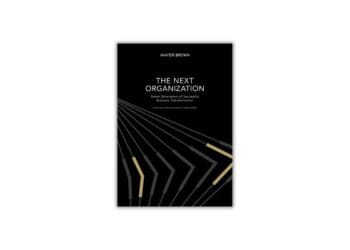A Partnership to Foster Long-Term Successes
The single biggest differentiator of profitable growth companies is their ability to allocate capital to bigger, riskier growth bets. Rather than inhibit growth, risk is uniquely positioned to enable it. In the quest for new growth, the risk, corporate strategy and finance functions have a unique opportunity to collaborate in order to establish and align around the risk required to grow.
with co-author Steve Shapiro
It’s no secret that strategy and finance need to work together to encourage growth – in fact, last year, both corporate functions cited integrating their planning as a top priority. Yet new research suggests that they need a third partner, risk, to move beyond incremental earnings increases and achieve long-term efficient growth.
Why risk? Because risk is the essence of growth.
CEB recently investigated companies that have consistently outgrown their industry peers while making simultaneous margin improvements. Just 60 companies we studied demonstrated this kind of “efficient growth,” and the single biggest differentiator of these profitable growers was their ability to allocate capital to bigger, riskier bets. Their R&D portfolios were disproportionately weighted toward transformational innovation projects, and their M&A deals were 40 percent larger on average.
And while much has been made about businesses taking risks that are desperate or quasi-legal, there is a better way. It turns out that risk is like cholesterol – there are bad and good strains. The bad one manifests in recklessness and wrongdoing, while the good one can yield sustained growth.
This good strain of risk is what companies need to get the growth they are seeking, and the potential returns are real. Our research confirms that companies that are best at taking smart risks to grow achieve a more than 7 percent total shareholder return premium versus their industry peers. Yet nearly half of chief risk officers observe decisions inconsistent with the company’s established risk appetite and over three-quarters of finance professionals said that senior leadership became more risk averse in 2016.
But before looking at how risk teams can encourage better risk-taking, it’s important to uncover how we got here. Risk aversion has been growing for a while and can be traced to three related causes – the lingering effects of the financial crisis, the rise of assurance functions and an increase in controls.
The collapse of large financial institutions in 2008 led to a marked reduction in risk appetite, and the fear remains fresh in executives’ minds. Given this mindset, the number of assurance functions has nearly doubled in the last decade. And these trends culminate in the appearance of activities and processes that weigh down the business by either intentionally or inadvertently making it harder (or less attractive) for managers to make bold bets.
How Risk Can Help
Even as companies acknowledge the need to make riskier growth bets to achieve efficient growth, most respond within functional silos rather than looking for collaborative approaches to solving the problem. This leads to redundancies, wasted time and frustration.
Instead of going at it alone, risk needs to work with strategy and finance to effectively change how companies approach new growth opportunities. They can do this by taking three actions:
1. Improving alignment between risk and strategic planning
The first step is to align calendars such that annual risk appetite and ERM discussions start concurrently with the strategic planning process. Risk leaders should participate in the process early to get a solid understanding of organizational growth ambitions. They should then begin to formulate the risk implications of that growth ambition and share it back with the strategic planning group, including finance. The risk profile that ERM generates can help firm leadership understand what types of additional risk-taking are prudent in pursuit of growth.
Second, the chief risk officer should lead planning participants through a discussion of risks associated with major growth initiatives. This unearths a variety of risks and opportunities, challenges managers’ assumptions of implied risks and tests their understanding of and appetite for a range of uncertainties and risk outcomes.
2. Defining risk appetite in proper context
Risk appetites are too often articulated in abstract, context-free terms that risk professionals understand (“risk exposure, residual risk,” etc.) and not in terms that provide managers with clear guidance on the risk-taking decisions they are expected to make. Similarly, the risk appetite conversation is too often entirely divorced from the company’s growth conversations. This abstraction and segregation encourages participants to consider the establishment of risk appetites as an “assurance” or “compliance” exercise.
Instead, risk guardrails need to translate into actual, material shifts in how finance manages the business and its investments. If strategy and risk enable risk-taking, then finance must fund it.
3. Setting a dynamic, not static risk appetite
Lastly, CROs should collaborate with strategy to help leadership consider risk appetite in the context of what needs to change to achieve growth objectives. Rather than setting the conversation around the amount of risk executives are comfortable with, the question should instead be, “Where do we want to see management taking on more (or less) risk, and in what way?”
A New Role for Risk
It’s true that the rise of risk and other assurance functions coincided with a rise in growth-stunting risk aversion. Yet this link is no indictment – risk can also serve as the remedy. With a more cross-functional role, the risk team can establish a risk appetite designed for the company’s growth ambition. And not only does the function have an important role to play in stimulating efficient growth, but a more collaborative approach can also help risk move beyond its assurance responsibilities to those of a true strategic partner.



 Matt Shinkman is Practice Vice President for
Matt Shinkman is Practice Vice President for 








